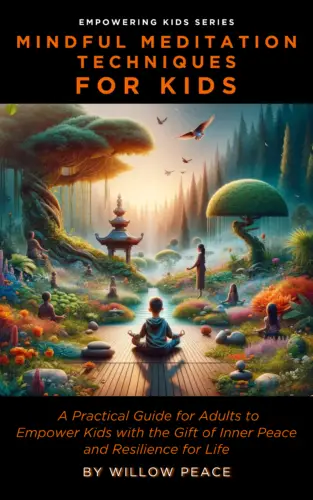By Oliva Wilson
Staff writer for Wake Up World
We’ve long heard about the benefits of connecting with nature in holistic living. Whether through gardening or simply spending time outdoors, a growing body of evidence suggests that nature has a profound effect on our well-being. But what about talking to plants? Could communicating with them improve their growth and health? Surprisingly, modern research suggests that it might. In this article, we’ll explore recent studies that provide insight into the science behind talking to plants and how it could positively impact your garden and your life.
The Science Behind Plants Responding to Sound
Can Plants Hear? New Discoveries in Plant Perception
Plants may not have ears, but they have mechanisms allowing them to respond to sound and vibrations. Recent studies have shown that plants can “hear” vibrations and react in various ways. A study on Arabidopsis thaliana published in Scientific Reports [1] demonstrated that exposure to sound vibrations can lead to gene expression and hormonal activity changes, ultimately promoting root growth and cell division.
Additionally, research from Oecologia [2] found that plant roots could use sound to locate water, suggesting that plants possess a form of acoustic perception that plays a role in survival. These studies indicate that plants are far more attuned to their surroundings than we might have imagined, and sound—including human speech—could play a significant role in their development.
Talking to Plants: Myth or Reality?
The idea that talking to plants can help them grow has been popular for decades, but is there any science to support it? The Royal Horticultural Society conducted an experiment where tomato plants were exposed to recordings of human voices[3]. Interestingly, plants “spoken to” by female voices grew taller than those exposed to male voices. Although the exact reasons are unclear, this experiment suggests that human interaction—whether through speech or presence—can have a tangible effect on plant growth.
One possible explanation for this effect is that speaking to plants increases carbon dioxide levels in their environment, which plants use for photosynthesis. However, this doesn’t explain why different voices or sound frequencies seem to have varied effects on plant growth, indicating that more subtle mechanisms may be at play.
Sound Waves and Music: A Symphony for Plant Growth
Music and Its Influence on Plants
It’s not just human voices that seem to affect plants. Several studies have explored the impact of music on plant growth. A 2019 study published in Scientific Reports [4] revealed that plants exposed to classical music had increased rates of photosynthesis and better overall growth compared to plants left in silence or exposed to random noise. This research supports the idea that sound waves, including music, can stimulate a plant’s biological processes, leading to healthier, more vibrant growth.
Moreover, other research has shown that different types of sound, from gentle vibrations to music, can alter plants’ cellular activity and gene expression. This could mean playing the right music or simply talking to your plants could benefit their development.
How to Incorporate Plant Communication into Your Gardening Practice
Practical Tips for Talking to Your Plants
While the research behind talking to plants is still emerging, it’s clear that human interaction, sound, and vibrations can influence plant health. Here are some simple ways you can incorporate this into your gardening:
- Talk to Your Plants: Whether encouraging words or reading aloud, talking to your plants for a few minutes each day may help create a nurturing environment for growth.
- Play Music in Your Garden: Consider playing classical music or nature sounds around your plants. As studies have shown, certain sound frequencies can stimulate better photosynthesis and growth?
- Mindful Interaction: Simply spending time in your garden, touching plants gently, and being present can foster a deeper connection with nature, which may benefit you and your plants.
Creating a Harmonious Garden Environment
In addition to verbal communication, creating a peaceful and supportive environment for your plants can enhance their growth. Mindfulness in gardening is about more than just speaking to your plants—it’s about maintaining a balanced ecosystem that allows plants to thrive. Tending to your plants carefully, choosing the right music, and spending mindful time in the garden can all contribute to a healthier garden and a more fulfilling gardening experience.
Conclusion
While talking to plants might sound like a simple gardening myth, modern science is beginning to uncover the fascinating ways plants interact with sound and human presence. From responding to vibrations to thriving in the presence of music, plants are highly sensitive to their surroundings. By incorporating these insights into your gardening routine, you may improve your plants’ health and deepen your connection with nature.
References
- Exposure to Sound Vibrations Lead to Transcriptomic, Proteomic and Hormonal Changes in Arabidopsis. https://doi.org/10.3390/ijms22115739
- Tuned in: Plant Roots Use Sound to Locate Water. https://link.springer.com/article/10.1007/s00442-017-3862-z
- Women’s voices ‘make plants grow faster’ finds Royal Horticultural Society https://www.telegraph.co.uk
- Plants detect and respond to sounds – https://link.springer.com/article/10.1007/s00425-023-04088-1
- Sound Waves Promote Arabidopsis thaliana Root Growth by Regulating Root Phytohormone Content. https://doi.org/10.3390/ijms22115739
About the Author
Olivia Wilson is a passionate writer with a green thumb and a heart for healthy living. Through her articles, she aims to inspire others to cultivate vibrant gardens and nourish their bodies and souls through the power of nature. When she’s not tending to her garden or experimenting with new recipes in the kitchen, she can be found exploring local farmers’ markets or enjoying a peaceful hike in the great outdoors.
Most People Will Stay Stuck in 2025—Will You?
Most people will watch the world change and do nothing. But you? I bet you’re a bit like us—you see the writing on the wall. The system isn’t built for freedom, and waiting around for things to get better isn’t a strategy.
What do you know about building wealth outside the system?
If you’ve been looking for a way to break free from the grind and earn in a way that actually aligns with your values, you need to see this.
Inside this FREE masterclass, you’ll discover:
- A proven business model backed by a 50-year-old company
- A plug-and-play system—no chasing, cold messaging, or weird sales tactics
- A way to generate income while focusing on what actually matters
Most people will sit on this and do nothing. The good news? You don’t have to be most people.
Click here to watch now.
 If you’ve found value in our articles, we’d greatly appreciate your support by purchasing Mindful Meditation Techniques for Kids—A Practical Guide for Adults to Empower Kids with the Gift of Inner Peace and Resilience for Life.
If you’ve found value in our articles, we’d greatly appreciate your support by purchasing Mindful Meditation Techniques for Kids—A Practical Guide for Adults to Empower Kids with the Gift of Inner Peace and Resilience for Life.
In the spirit of mindfulness, we encourage you to choose the paperback version. Delve into its pages away from screen glare and notifications, allowing yourself to fully immerse in the transformative practices within. The physical book enriches the learning process and serves as a tangible commitment to mindfulness, easily shared among family and friends.
Over the past few years, Wake Up World has faced significant online censorship, impacting our financial ability to stay online. Instead of soliciting donations, we’re exploring win-win solutions with our readers to remain financially viable. Moving into book publishing, we hope to secure ongoing funds to continue our mission. With over 8,500 articles published in the past 13 years, we are committed to keeping our content free and accessible to everyone without resorting to a paywall.








